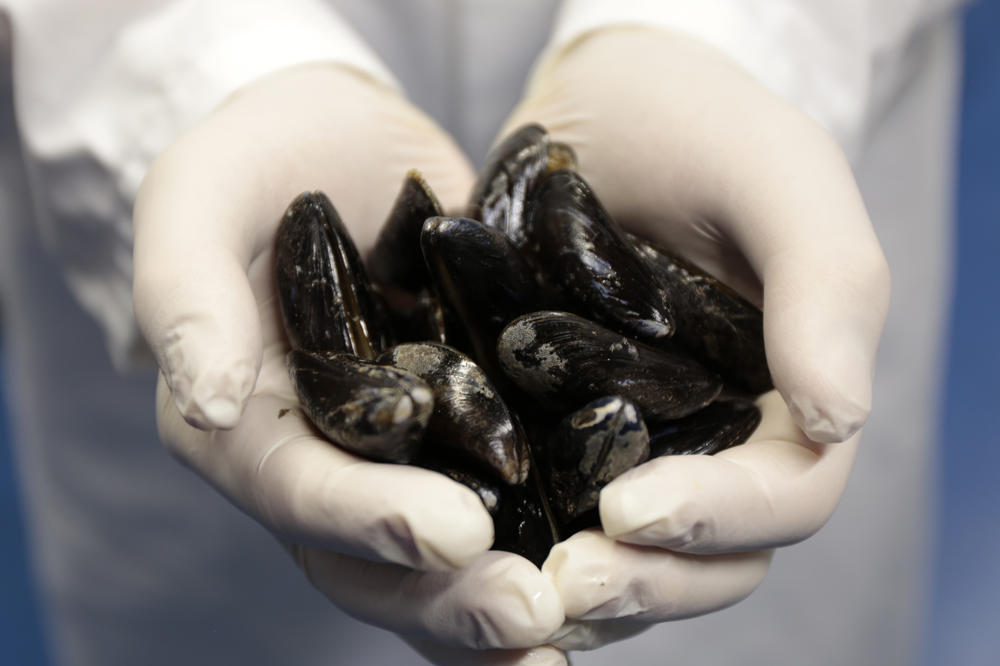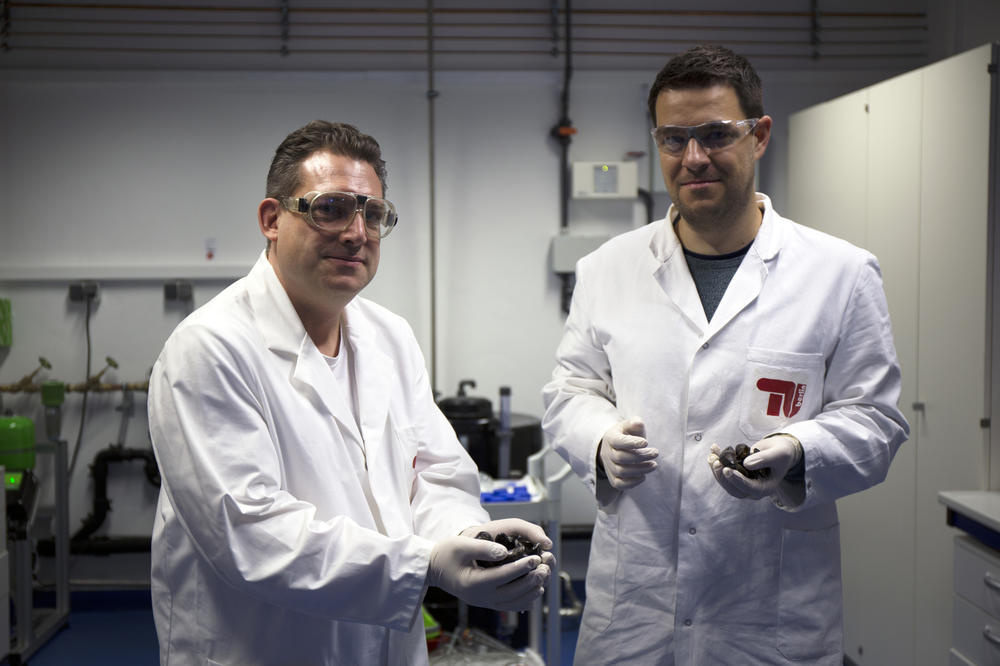Super Glue – Copied from Mussels
Researchers at the UniCat Cluster of Excellence are developing an adhesive protein that binds things together, even in damp environments. It could be used in future to glue bones and wounds.
Jan 09, 2018
The glue produced by mussels serves as a model for a biogenic adhesive which, it is hoped, will be able to bind together skin, tissue, and even bone.
Image Credit: TU Berlin/PR/Tobias Rosenberg
The ski season is underway! Winter sports enthusiasts swarm over the slopes. And in local hospitals, clinicians are busy with screws and wire. In winter, Austria’s hospitals alone treat around 350 skiers and snowboarders every day. Almost half of these have suffered broken bones, which often have to be fixed in complex procedures involving screws, plates, and spokes.
But Nediljko Budisa of Technische Universität Berlin predicts, “This type of treatment could in some cases be a thing of the past.” Together with colleagues from the Biocatalysis Working Group at the UniCat Cluster of Excellence, he has developed a biogenic adhesive that will in future allow skin, tissue, and even bones to be stuck together. “For a glue to work inside the human body, it must function in damp surroundings and be biologically degradable.” Budisa and colleagues have copied from nature – specifically, the oceans.
In order to produce the mussel glue in the laboratory, Dipl.-Ing. Christian Schipp (left), Dr. Matthias Hauf (right) and other researchers at the UniCat Cluster of Excellence reprogrammed strains of the intestinal bacterium, Escherichia coli.
Image Credit: TU Berlin/PR/Tobias Rosenberg
Mussels produce a type of super glue that is effective in any environment, including under water. However, it is however a fast-working material and difficult to handle. “To be able to make mussel glue in the laboratory, we reprogrammed strains of Escherichia coli, a bacterium commonly found in the lower intestine”, explains Budisa’s colleague Matthias Hauf. Researchers have been working on a solution for some time: the problem was that intestinal bacterium lacks the central building block of the wet glue. To address this, Hauf and his colleagues add a specific enzyme to the bacterium. This allows incorporation in the mussel glue of Escherichia coli, the building block – which the researchers have endowed with an additional light-activated property.
“We fed our altered intestinal bacterium with this building block, the ONB-Dopa amino acid, so that our glue can now be activated at the target point”, Hauf says. The adhesive property is switched on by irradiating the glue with UV light at a wavelength of 365 nanometers. Amino acids provide the glue with a type of protective layer, similar to the principle of covers on adhesive strips. “This protection is what makes the adhesive suitable in practice, in the first place,” the scientist explains.
Together with the Bioprocess Engineering Department at Technische Universität Berlin and some small companies belonging to the Berlin-based research network, Network for Pharma Solutions – NetPhaSol, researchers hope to further develop the idea, for which a patent application has been filed, and bring it to market maturity. Separate development and realization of the business idea will take place in the laboratories of Inkulab, the UniCat Cluster of Excellence outsourcing laboratory at Technische Universität Berlin. It will take a while, however, before the adhesive can be used on injured skiers, snowboarders, and other patients. “Our glue will have to go through many tests and clinical studies before it is finally launched on the market,” Budisa concludes.
Further Information
The aim of the Cluster UniCat: Unifying Concepts in Catalysis is to develop catalysts for the more efficient use of energy sources and raw materials, as well as the manufacture of new active ingredients through synthetic biology. The cluster is a shared project of Technische Universität Berlin in cooperation with Freie Universität Berlin and Humboldt Universität zu Berlin.
Under the German government's Excellence Strategy for the Federal Republic and the Länder, the application entitled Unifying Systems in Catalysis (UniSysCat), which is based on UniCat findings and extends the research program, progressed to full proposal.


